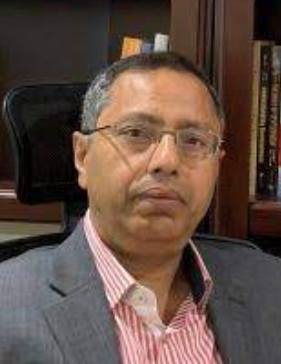Keynote Addresses
Prof. Xia Huang

Dr. Xia Huang is a Professor at School of Environment, Director of State Key Joint Laboratory of Environment Simulation and Pollution Control, Tsinghua University, China. She is a distinguished fellow of IWA and Chair of Management Committee of the IWA Specialist Group on Membrane Technology. Her main research interests include membrane based wastewater treatment processes, membrane fouling mechanisms and control methods, bio-electrochemical technologies for wastewater treatment. She is an Executive Associate Editor-in-Chief of “Front. Environ. Sci. Eng.“, Associate Editor of “Wat. Sc. & Technol.”. She has published more than 300 peer-reviewed SCI articles, and was awarded 2009 Environ. Sci. Technol. Best Paper and 2018 Environ. Sci.: Wat. Res. & Technol. Best Paper, the 2nd Class of the State Science and Technology Progress Award thrice. She was also awarded by the National Science Fund for Distinguished Young Scholars and the Yangtse River Scholar reward.
Anaerobic MBR: Opportunities and Challenges Toward Carbon Neutrality
Water-energy-resource constraints are already impacting radically the life of human beings around the world. This crisis is putting more demands on wastewater treatment process, including energy regeneration, water reclamation, resource recovery and carbon neutral.Anaerobic membrane bioreactor (AnMBR), converting organic carbon in wastewater to methane under the premise of high effluent-water quality, has become a promising green and sustainable technology in municipal wastewater treatment.
Overview the previous research results about AnMBRs treating sewage, qualified effluent was guaranteed among pilots under varied operational conditions. However, methane conversion efficiency fluctuated, significantly influenced by temperature. Energy recovery efficiency could be boosted by optimizing AnMBR configuration; meanwhile, reducing/recovering dissolved methane is vital for both energy recovery and carbon emission reduction.
Developing low-energy cost AnMBR manipulating technology is another critical route to achieve energy and carbon neutral. Membrane fouling control, always contributing to the largest proportion of energy consumption, could be reduced to less than half with optimized fouling control strategies.
To go a step further, a holistically integrated water regeneration process of low-carbon and high-quality, should be developed and promoted. Consisting of phosphorus reclamation coupled with energy recovery and nitrogen removal, it has the potential to achieve net-zero emissions.
Dr. Govinda Timilsina

Govinda Timilsina joined the Development Research Group of the World Bank in May 2007. He has more than 25 years of experience across a broad range of sustainable development topics and infrastructure at the international level. His key expertise includes macroeconomic and structural modeling for policy analysis, particularly general equilibrium modeling; infrastructure and economic development; clean and renewable energy economics and policies including biofuels; climate change policies and carbon pricing; energy, electric power, and urban transportation policies. Prior to joining the Bank, Dr. Timilsina was the Senior Research Director at the Canadian Energy Research Institute, Calgary, Canada, where he worked mainly on climate change policy, economic impacts assessment, and electricity issues. Currently, he is leading studies on infrastructure, economic growth and poverty; climate change policies including carbon pricing and clean technologies; and regional energy cooperation and trade. He also serves as an editor of the Renewable and Sustainable Energy Reviews journal.
A brief description of his speech in the conference is as follows: A carbon tax is one of the main pricing instruments for climate change mitigation. Many industrialized countries have implemented it. Developing countries are also showing strong interest in it. However, policymakers are facing several questions regarding the economic and distributional impacts of a carbon tax. The questions include: (i) what type of tax design architecture best suits them, particularly how best to utilize the carbon tax revenues; (b) how does it impact the poor? Can a carbon tax be pro-poor? (c) Does a carbon tax produce fiscal co-benefits? (d) Does a carbon tax help reduce economic informality? (e) Does a carbon tax promote renewable energy (e.g., hydro, solar, wind) without causing additional economic costs? To answer some of these questions, the seminar presents results from three studies on carbon tax for developing economies. Two studies are for low-income countries in Sub-Saharan Africa (Cote d’Ivoire and Ethiopia) and one study is for a middle-income country (China). The findings will be complemented with the speaker’s forthcoming review study in the Journal of Economic Literature on carbon taxes.